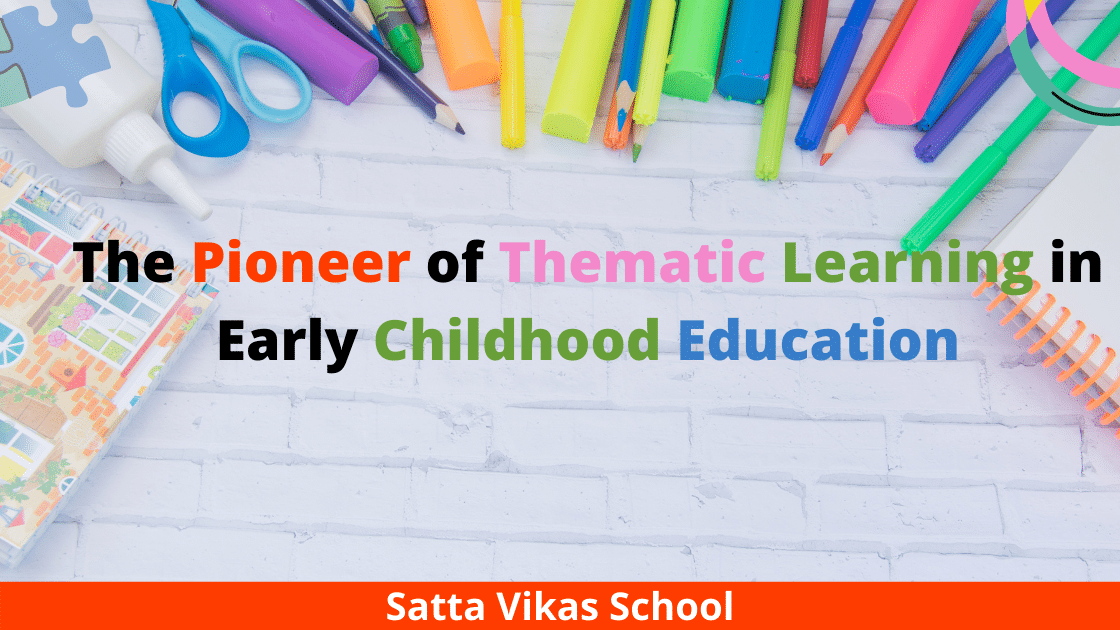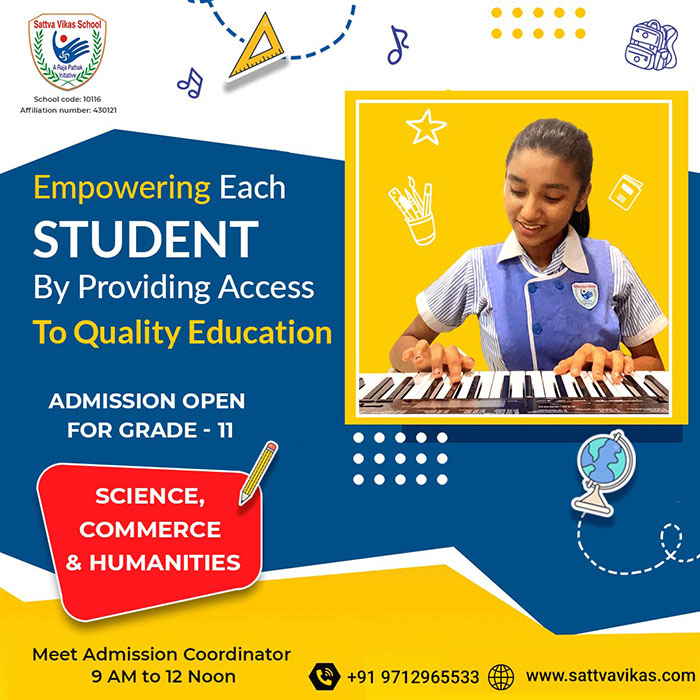
The NEP’ 2020’s Focus on Early Childhood Education Can Help Children Live up to Their Potential. It defines Early Childhood, as the years from birth to age eight – a critical period that sets the stage for a child’s growth and learning pathway. Research from neurobiology and cognitive development suggests that 90% of brain development occurs in the first six years of life. During these years, vital development in emotional control, motor, cognitive, language, and number skills occur systematically, with acquisition of simpler abilities paving the way for more complex ones. Therefore, when it comes to improving educational, socio-emotional and economic outcomes, early childhood offers a unique window of opportunity to implement programs that can be more impactful than those targeting older age groups. Hence during this most vital period children must explore schooling in a warm and caring environment like Sattva Vikas School where each child learns at his/her own pace, where each child is treated as a unique learner.
The Reggio Emilia Philosophy is an innovative and inspiring approach to early childhood education, which values the child as strong, capable and resilient; rich with wonder and knowledge. The Reggio Emilia Philosophy is an approach to early childhood education accepted worldwide. The Philosophy rides on the principles of the inborn curiosity of children and aims to assist them with understanding their world and who they are in it. The philosophy simply guides the decisions of teachers in how they approach education. The three core principles of the Reggio Emilia philosophy: the child, the environment, and the teacher.
The Child
The Reggio Emilia philosophy values the child as central to their own learning. Children are able to pursue their own interests and revisit and build upon ideas at their own pace. You may have heard of something called the ‘100 languages of children’. This concept recognizes that children have multiple ways of thinking, playing, exploring, speaking and doing. The Reggio Emilia approach encourages children to use every tool they have to express themselves.
The Environment
A Reggio-inspired environment, often referred to as ‘the third teacher’, is one that is open and free-flowing. It enables uninterrupted exploration, play and learning. Outdoor spaces are valued just as highly as formal classrooms, and the design of the space should allow children to move freely between the two. In addition, it is important that children have free access to stimulating resources, as they cannot be the owner of their learning journey without this.
The Teacher
Teachers are encouraged to observe children rather than to direct them. It is important that children are allowed to experiment in their own way, make mistakes and find new solutions. The role of the teacher is to gently move students towards areas of interest to them, through careful observation carried out over time.
The Reggio Emilia philosophy is an integral part of education at ‘Sattva Vikas School’ nominated as one of the cbse school in ahmedabad. Quality education has always been our priority, and our pre-school curriculum is no exception. In a changing and continually improving world, use of technology has become commonplace. Not only are adults well-acquainted with it, so is our newest generation. In fact, they have been observed to take to digital technology even more organically.
In Sattva Vikas School’s Reggio settings Kindergarten kids are active constructors of knowledge, who are encouraged to be ‘researchers. Most of the educational experiences within classrooms take the form of experiential learning, wherein Sattva’s tiny tots have opportunities to actively participate, explore and question things. This perspective has been endorsed by many philosophers, who state that these different ways of thinking, exploring and learning are expressed with the use of different tools of learning through play way methods of teaching, artistic expressions, music, dance and movement, craft work, real play and drama in the classroom. Sattva Classroom layouts are carefully planned to encourage interaction between those in the classroom and with the outdoors, and to be open-ended, offering many options for exploration to Sattva Kindergartners.

